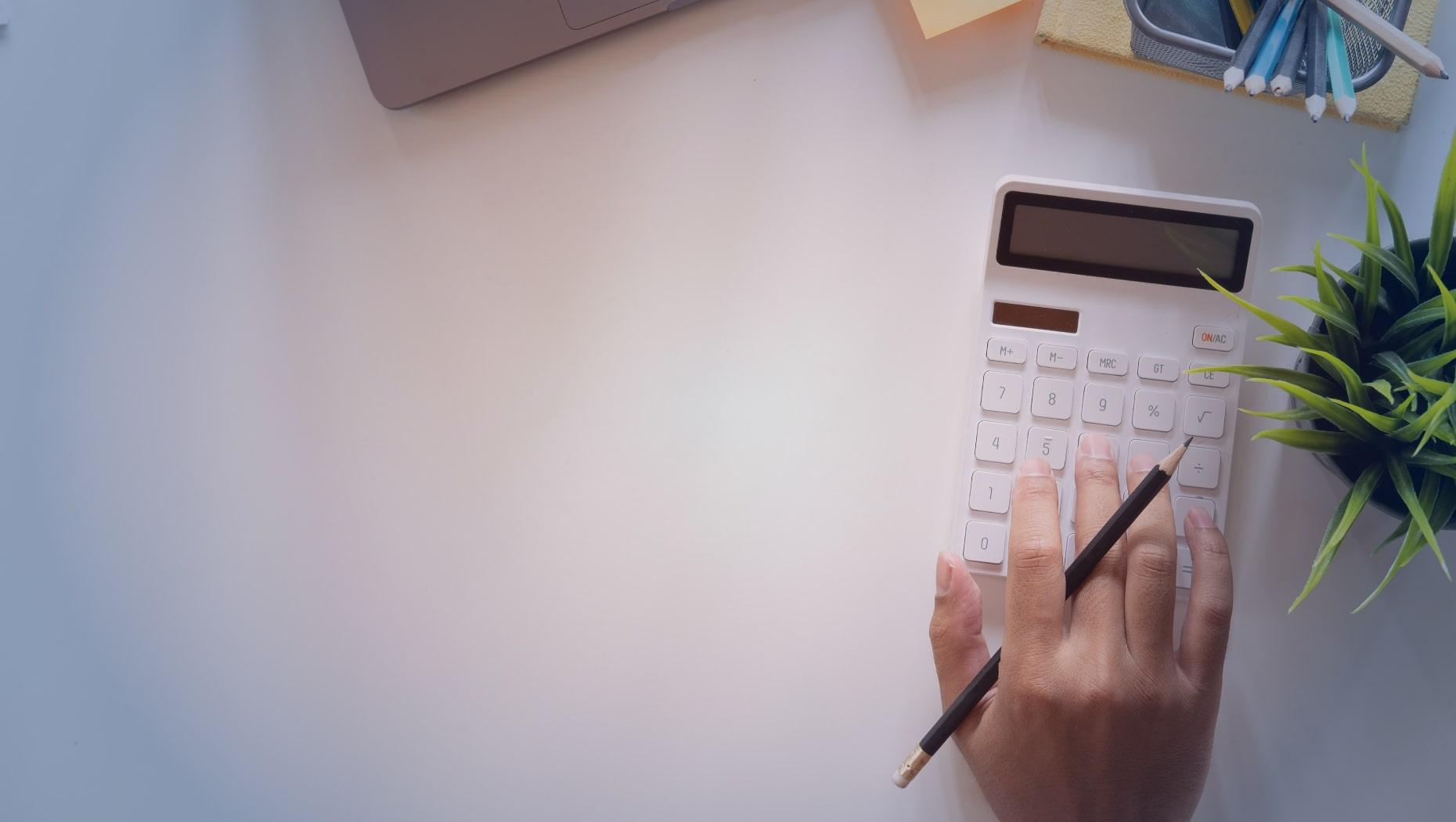Buying a home is a big undertaking, which is why it’s smart to start the process with a well thought-out gameplan. You’ll need to determine not only how much you need to save for a down payment and other purchase costs, but also how much you can afford to spend each month on your mortgage and related costs.
To turn your dream of home ownership into a reality, learn more about the costs to consider, and nine easy steps to get your savings plan underway. It can take some time, but each bit of progress you make gets you closer to home ownership.
How to Save for a House: 9 Steps
Saving for a house involves determining how much home you can afford and saving towards your goal, but it also includes building an emergency fund and creating a budget that allows you to afford your future house payments.
Earning more income, allocating windfalls toward your house savings, trimming spending, and paying off debt can also help you save.
1. Determine How Much House You Can Afford
It’s important to know how much home you can afford before you start to save, so you can create a realistic savings goal. The amount of home you can afford is based on two primary things - how much you can save for a down payment and how much you can afford to spend each month on your total housing costs.
Start by calculating how much you can afford monthly by using the following guidelines.
Aim to keep your total monthly debt payments below 30% of your gross monthly income. That means if you earn $10,000 per month, your monthly payments should be no more than $3,000.
Your monthly debt payments include all the minimum payments on your current balances (like auto loans, student loans, and credit cards if you don’t pay them off in full monthly) plus your future home’s PITI (principal, interest, taxes and insurance). And if applicable, include any HOA or building fees as well.
You can use our handy mortgage calculator to find your exact amount.
Once you know how much you can afford to borrow for a home, focus on how much you can save for a down payment and other purchase costs. See below for more info on how to come up with your down payment target.
Here’s an example:
If you have $10,000 in gross monthly income, your total monthly debt payments should be less than $3,000. That means if you already pay a combined $500 for other debts like a car and student loan, your PITI should be no more than $2,500.
With a 6.5% 30-year fixed mortgage, you can likely afford a $400,000 home with a 20% down payment ($80,000), since the monthly payment would be $2,402. (This is just an estimate, since the property taxes and insurance premium amount can vary based on factors like location).
For a more detailed look, see our article: How Much Mortgage Can I Afford?
2. Build Your Emergency Fund
Before buying a home, it’s important to create a financial safety net. This will help protect you from racking up debt if something unexpected comes up. Being a homeowner increases the chances of unexpected expenses, like water heaters breaking, roof repairs, and water leaks, so building your emergency fund will help you cover these types of expenses without going into debt.
Pro Tip: Start by saving the equivalent of one month of take-home pay in your emergency fund, then build up to six months’ worth prior to purchasing your home.
3. Build a Budget
You can’t start saving for a house in earnest until you have a good handle on how much income you’ve got coming in, what your expenses are, and how much you spend in a given month.
You’ve already done some number-crunching to figure out how much home you can afford. Next up is creating a complete budget for further insights into your finances. Start with three broad categories:
Fixed expenses: Bills that stay the same each month like rent, utilities, phone, cable, subscriptions, and memberships.
Flex expenses: Daily spending you do on things like groceries, entertainment, and personal care.
Non-monthly expenses: Expected expenses that come up throughout the year that you can plan ahead for. These are items like quarterly or annual tax payments or insurance premiums, birthday gifts, vacations and car maintenance.
Once you’ve added everything up, you can subtract the total from your monthly income. That can tell you how much you have left to put toward your main goal of buying a house.
A budgeting app like Monarch Money can help you get control of your fixed, flex, and non-monthly spending as you save to buy a home.
4. Set Your Savings Goal
Let’s say you want to spend $500,000 on a house, and you plan to make a 20% down payment of $100,000 in five years. In addition to your down payment, it’s important to save for closing and moving costs, so let’s assume $10,000 for closing costs and $5,000 for moving costs for a target savings of $115,000. In that case, you’d have to save about $1,900 per month.
Keep reading for some ideas on how to increase your savings and accelerate your progress.
5. Put Windfalls to Work
Besides your regular income, any extra money you come into — such as bonuses, cash gifts, or tax refunds — is an opportunity to reach your goal faster. If you want to be more aggressive about saving for a house, you can earmark a large percentage of your windfalls directly into savings.
6. Minimize Unnecessary Spending
Freeing up more dollars from your budget starts with tracking your spending. When you see it on paper (or in an app), you may realize you’re spending way too much on lunches out or entertainment. You might be able to save a couple of hundred extra dollars per month with just a couple tweaks.
You can also review your fixed expenses to see if there are opportunities to lower bills, such as negotiating with your cable provider or switching auto insurance carriers.
7. Pay Off Debt to Free Up Monthly Income
Try to knock out high-interest debt (over 7%) as well as high-payment debt to free up cash flow so that when it’s time to pay your mortgage, you can cover it comfortably. This has the added bonus of improving your DTI and probably your credit score as well, once your balance is paid off.
High-interest debt is a roadblock when you’re saving for a house because those interest payments make it hard to reduce the principal balance. So, getting that debt off your books should be a top priority.
There’s a benefit to paying off some lower interest debt as well, especially for a high-payment loan that’s close to completion. For example, if you’re currently paying $350 a month on an auto loan and you only have a couple thousand to go, paying it off faster means you’ll free up that income to put toward your home-buying goal.
8. Diversify Your Income Streams
In addition to cutting your expenses, try to find ways to bring in more money. You can try asking for a raise if you can make a strong case for it, or see if there are overtime opportunities.
Asking for a raise starts with making a list of your accomplishments, researching competitive salaries for your role, and making sure there’s something in it for your boss (like a goal to help the company in some way).
You might also decide to pick up a high-paying side hustle like online tutoring, freelance graphic design, or doing some consulting.
9. Automate and Optimize Your Savings
When you’re saving to buy a house, finding the money is half the battle. The other half is choosing the right savings vehicle that can tack on some interest to help your money grow.
A high-yield savings account, which you can open online, is a great option. It pays a higher interest rate than a traditional savings account. If you have $10,000 saved, a 4% annual percentage rate will add $400 per year to your account.
If you want to earn more interest, you can use other short-term investments like:
CDs: These tie up your money for a set amount of time, but offer guaranteed fixed interest.
Series I bonds: The rate on these is tied to inflation, and since it’s currently high, you can get a nice return. It’s currently at 6.89%, but it changes twice per year. Just note that you must keep money in the account for one year minimum, and for five years in order to withdraw without penalty.
Conservative bond funds: This investment is generally low risk, but you might want to work with a financial advisor to help you optimize your strategy.
No matter which account type you choose, your best bet is to automate your savings, then try to forget it’s there (other than to peek at the account every once in a while and smile at how quickly it’s growing!).
Pro Tip: Be aware that CDs and savings accounts are FDIC insured up to FDIC limits, while bonds are not.
Frequently Asked Questions
Here are answers to frequently asked questions about how to save for a house.
How long will it take to save for a house?
You can expect that saving for a house will take several months if not a few years depending on how much disposable income you have and how much you need to save. It also depends on how much you’re willing to trim your budget, how you use your windfalls, and if you are able to generate extra income.
What is the fastest way to save for a house?
The speed depends on how much you can set aside each month and the sacrifices you’re willing to make. With that said, saving for a house is really more about the progress you make than the length of time you spend.
While making sacrifices can definitely move the needle faster, try not to do it at the expense of your mental health, well being, and relationships. It’s important to enjoy life even as you plan for your future.
Can you buy a house with no down payment?
Depending on your financial situation, it‘s possible to buy a house with a very minimal or no down payment, but it’s not always in your best interest.
Except for VA home loan borrowers, most people who put very little down on a home will pay non-recoverable monthly private mortgage insurance (PMI) — or Mortgage Insurance Premium (MIP) if it’s an FHA loan. That means a higher monthly payment and a higher overall cost.
If you’re a new homebuyer and you meet certain eligibility requirements, you may qualify for a down payment assistance program, which can be a grant or a loan. If you can get enough assistance to avoid paying PMI, it could be worth it.
Be sure to read the fine print though, as some down payment assistance programs are actually second loans on the home, or have requirements that say you must remain in the home for a certain length of time.
How Much Will it Cost to Buy a House?
Saving to buy a house isn’t only about the down payment. Here’s a look at the upfront and monthly costs to think about.
Upfront Costs
The upfront costs of buying a home include your down payment, closing costs, and moving expenses. Let’s take a look at each.
Down Payment
Though you don’t have to make a 20% down payment, it can help you avoid paying private mortgage insurance and lessen the cost of future mortgage payments.
PMI payment amounts are based on your credit score, but on average, you can expect to pay $30 to $70 per month for every $100,000 borrowed. That means on a $500,000 mortgage, you’d pay $150 to $350 extra per month for PMI, and it only lasts until you’ve reached 20% equity in your home.
Even if you can afford that cost, consider what that $350 per month could turn into if you were investing it instead.
Besides avoiding PMI, there’s another major benefit to making a larger down payment. If you do need to sell your house but housing prices have dipped, having more equity can insulate you from the risk of a short sale. A short sale happens when your home purchase doesn’t cover the outstanding balance of your loan. That can harm your credit and leave you owing your lender, even after you close the sale.
FHA and VA Down Payments
With government-backed FHA loans, the minimum down payment is just 3.5% down (if you qualify). However, you’ll also pay a Mortgage Insurance Premium for the entire life of the loan, unless you put down 10% or more, in which case you have to pay it for a minimum of 11 years.
There’s also an upfront MIP payment of 1.75% of the total value of the loan, added to your closing costs. On a $500,000 loan, that’s another $8,750 out of your pocket.
If you’re a veteran or are in active military service, you may be able to take advantage of a VA loan with no down payment.
Pro Tip: Putting less than 20% down can sometimes make sense, such as if you’re currently paying a very high rent, or if the monthly mortgage payment would still be affordable and the mortgage insurance cost isn’t exorbitant.
Closing Costs
As part of your home purchase transaction, there are a number of fees you’ll have to pay. These include origination fees, title search, appraisal fees, and discount points. These costs vary, but you should expect to pay between 2% and 5% of the home purchase price. On a $500,000 loan, that’s around $10,000 to $25,000.
Moving Expenses
Depending on how much gear you’re moving and how far, moving expenses can cost a couple of thousand dollars, or more if you’re moving out of state. You can use this moving cost calculator to estimate.
Monthly Costs
In addition to your monthly mortgage payment, you should also factor in other regular costs of owning a home, including property taxes, homeowners insurance costs, and HOA fees (if applicable).
Taxes and Insurance
Property taxes and insurance are sometimes rolled into your mortgage payment, and paid from an escrow account. If not, you should try to use a similar escrow approach where you save each month so you have the money available when the payment comes due.
Home Maintenance
Plan for regular maintenance such as landscaping, gutter cleaning, and HVAC tune-ups. One rule of thumb is to estimate $1 per year for every square foot of the home. For a 2,500 square foot home, that’s about $2,500 per year, or around $200 per month. But a lot depends on the age and condition of the home.
Number Crunch Your Way to a New Home
Now that you know how to start saving for a house, be sure to do the calculations based on your unique numbers. Once you know how much house you can afford and how much you want to put down, you can build a game plan and a timeline based on what your budget will allow.
Intuitive budgeting software like Monarch Money can help you stay on top of your cash flow and get closer to your home buying dreams.


